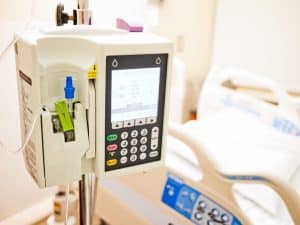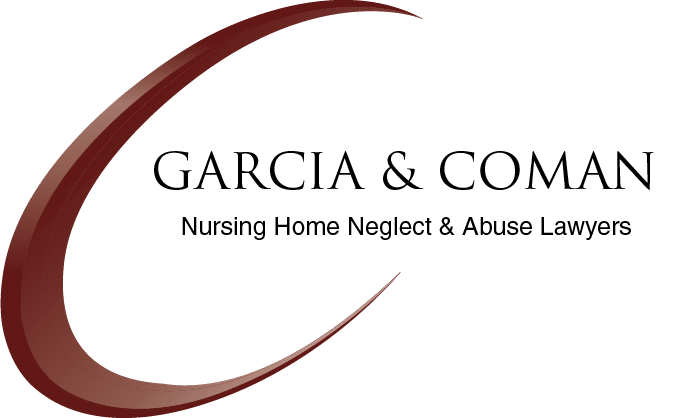Utilizing Technology to Monitor Nursing Home Care
 Nursing homes benefit from cameras and other technology to ensure the safety and well-being of their residents. These technologies help staff members monitor where the residents are, observe interactions with other residents, respond to emergencies, and provide care in many other ways.
Nursing homes benefit from cameras and other technology to ensure the safety and well-being of their residents. These technologies help staff members monitor where the residents are, observe interactions with other residents, respond to emergencies, and provide care in many other ways.
Nursing home technologies
Technology should complement medical care, and not replace care. Nursing home residents do benefit from daily human interactions. According to Western Governors University (WGU), some of the technologies that nurses are using that nursing homes can also use include the following:
- Automated IV pumps. These pumps are able to control the dosages and drips that residents receive. There are IV pumps for medications and IV pumps for nutrition. IV pumps benefit the residents by ensuring the residents get the medicine they need and saving time for nurses in the preparation of the medicines and nutrition.
- Portable monitors. These technologies allow nurses to check on a patient‘s vital signs (ECG, oxygen saturation, and respiratory rates) even if the nurse is helping other residents. The portable monitor alerts the nurse through an alarm in the event of an emergency. Portable monitors help to ensure accuracy by testing the residents on a specific schedule (such as every hour) even if the nurse is not immediately available.
- Smart beds. Smart bed technology helps nursing home staff track a resident’s weight, movement (or lack of movement which can cause bedsores and pressure ulcers), and even a resident’s vital signs.
- Wearable devices. These technologies help keep track of a resident’s breathing, sleep, heart rate, and exercise. Nurses can use their iPhones or smartphones to keep informed about a patient’s medical status and be alerted to emergencies. “For example, the Steth IO smartphone stethoscope is essentially a stethoscope app that allows nurses and doctors to simply use their smartphone to get breathing sounds and see heart rates.” According to WGU, wearable devices can help with various phases of medical care from diagnosis to recovery. Wearable devices (and other technologies) help reduce communication errors because the data is coming from the device or other technology.
- Electronic health records. These days, most nursing homes and other medical care providers are keeping their patient records electronically instead of with paper records. Electronic health records help the nursing home document the care residents are receiving and retrieve the information about the resident’s medical status quickly. Electronic health records can also be accessed by other members of the nursing home medical staff.
Electronic health records come with a mandatory compliance requirement. The Health Insurance Portability and Accountability Act (HIPAA) has strict requirements about sharing electronic health records. Generally, the resident (or the resident’s guardian if the resident has cognitive disorders) must consent to the disclosure of any electronic patient information.
Nursing homes can also use telehealth services so the staff and the resident can consult with a doctor who is not at the nursing home facility. This helps provide faster medical reviews, which are especially useful in the case of emergencies such as when a resident exhibits the signs of a stroke.
Nursing homes can use technology for both the resident’s physical health and the resident’s mental health.
Whether cameras can be used in nursing homes depends on state law. Some states have passed laws allowing for cameras. These laws generally require that the cameras be noticeable, there is a sign noting that the room has a camera that is used for monitoring, and the resident consents. Cameras should not be a substitute for personal involvement with nursing home residents. States that don’t have specific statutes allowing cameras generally have other guidance principles. While cameras may offer benefits for the nursing home to observe residents, there is also a counter-concern that cameras invade a resident’s privacy.
Robots and nursing homes
The New York Times reported in 2022 that many nursing homes are short on staff, in part due to the pandemic where many seniors died during the height of the pandemic. One strategy nursing homes are using to supplement their staffing needs is using robots. Robots and other technologies can help nursing homes and residents with many different needs including taking medications, contactless deliveries, and social engagements. Robots can also serve as waiters and busboys.
The New York Times story discussed how Dr. Arhsia Khan, a professor of computer science at the University of Minnesota Duluth, programs robots to work in nursing homes. Some of the ways her robots are helping nursing home residents is through such activities as “reminiscence therapy” which helps residents relive some of their experiences from their past like the day the resident was married. Robots are being used at some nursing homes to “facilitate video calls to the concierge or the in-house nurse if a resident needs medical care or help with his or her apartment.”
While robots can provide many benefits, there are ethical issues such as:
- “Who should get access to the robots’ extensive monitoring data — only the residents and doctors, or should their families also have it? “
- “Will the robots ultimately diminish human-to-human contact, an essential part of care?”
“The robots also carry associations of gender and ethnicity,” which can present certain challenges. There are concerns about whether robots will be used to replace human staff members. A major concern is that a robot is no replacement for a human relationship with a staff member or a family member.
One social benefit is that the robots that are being used at certain nursing homes throughout the country are helping to create a bond between grandparents and grandchild because grandchildren who may not want to be around anyone who is old or ill do seem to enjoy interacting with the robots.
Nursing homes are responsible for any preventable abuse or negligence that harms any of their residents. While new technology can help provide better care, the bottom line is that nursing homes are generally accountable for the negligence of their employees, failing to comply with federal and state regulations, and failing to meet common nursing home standards.
Call Garcia & Coman if you or a loved one was injured in a nursing home – or if a loved one tragically died. We’ve obtained more than $3 billion in recoveries for our clients. Call our nursing home lawyers or fill out our contact form to schedule a free consultation today. As a national firm, our offices are in Los Angeles, Phoenix, Long Beach, Louisville, and New Orleans.

Stephen M. Garcia represents victims of elder and nursing home abuse and is known as one of the leading civil litigators in the country. He is Senior Partner at Garcia & Coman, where the firm’s practice is focused on elder abuse, nursing home abuse, and wrongful death of the elderly.
Find out more about Stephen M. Garcia

